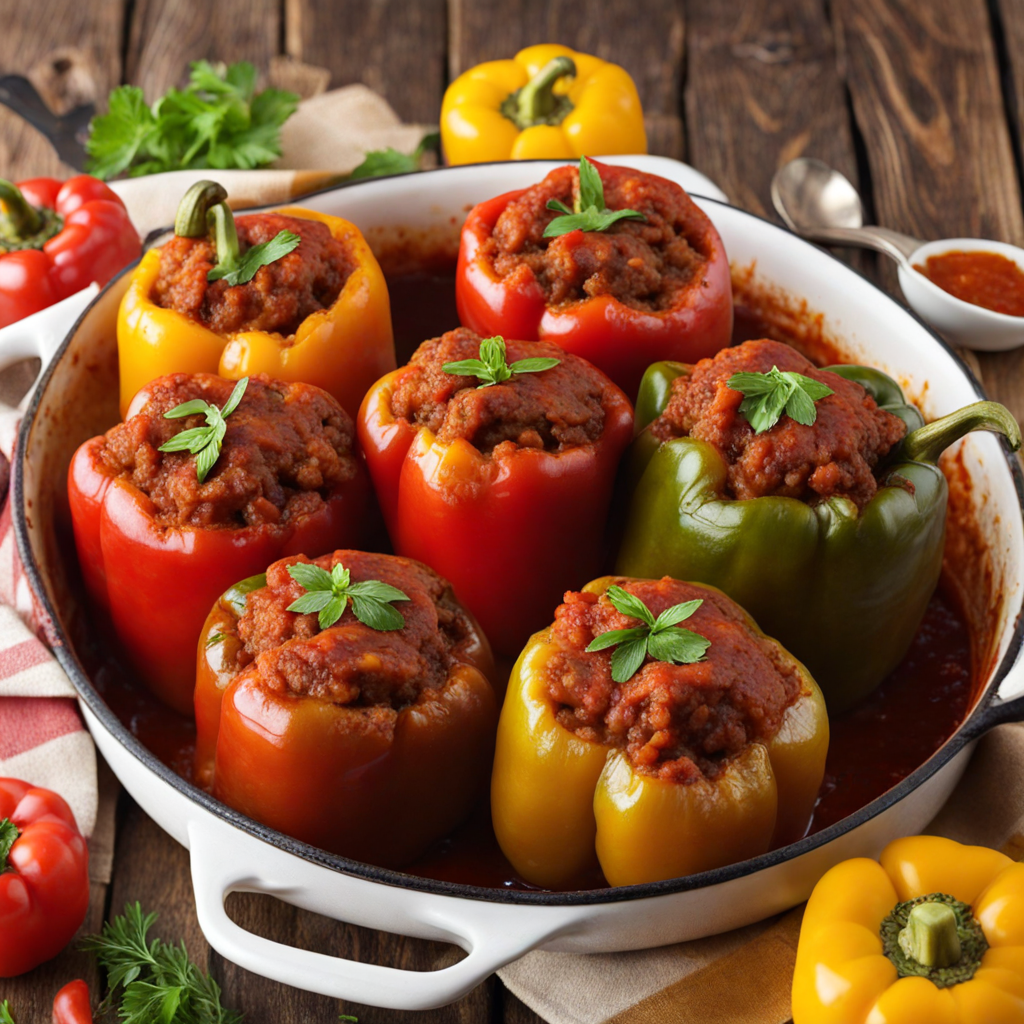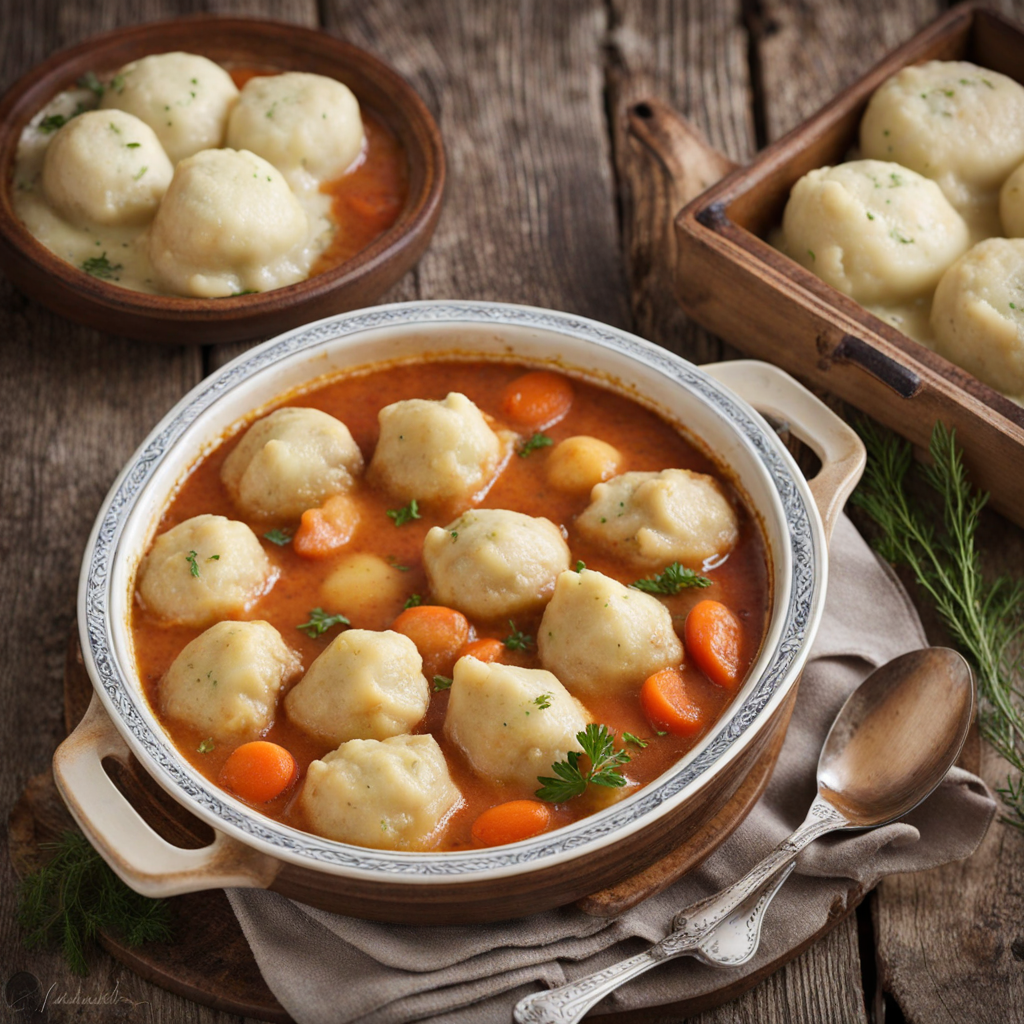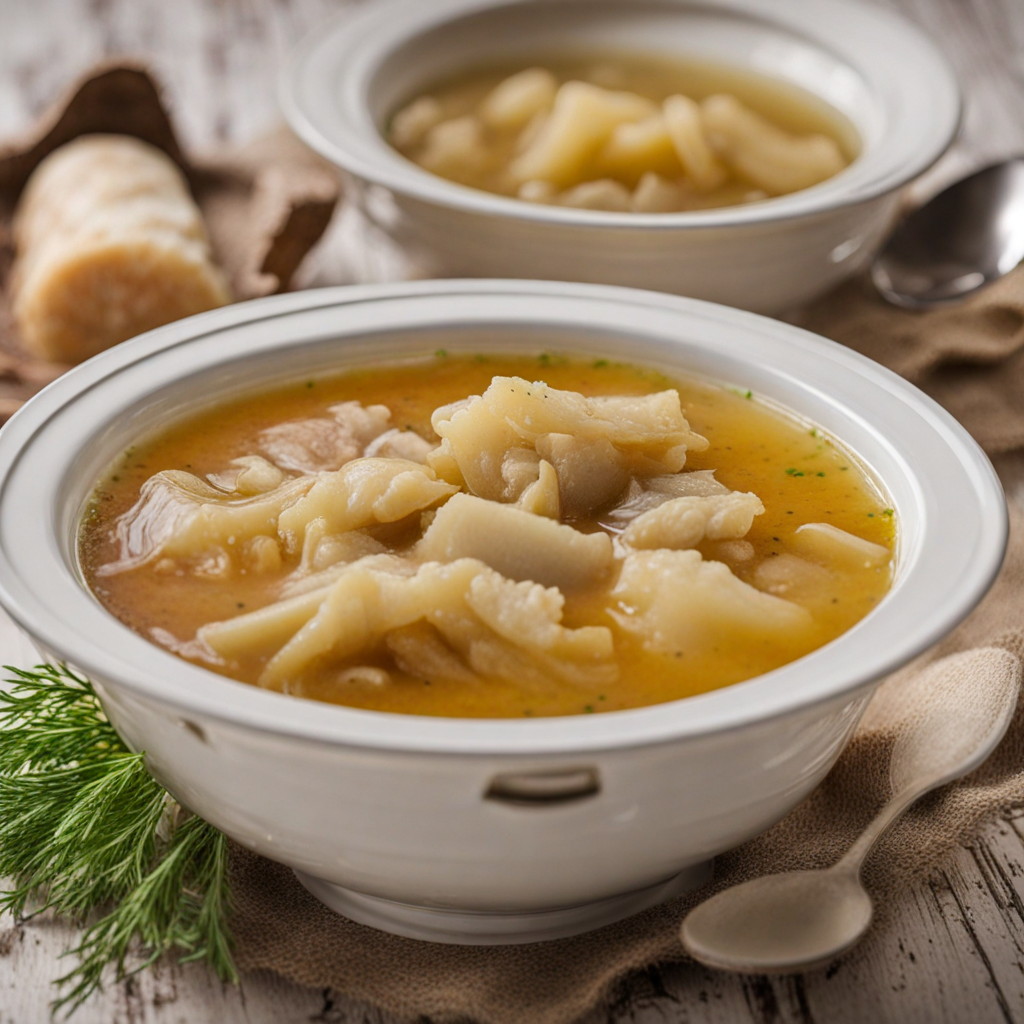Stuffed Bell Peppers
Stuffed Bell Peppers, or "ardei umpluți," are a beloved dish in Romanian cuisine that showcases the country's rich flavors and hearty ingredients. This dish typically features vibrant bell peppers, often in shades of green, red, or yellow, that are hollowed out and filled with a savory mixture of ground meat, usually pork or beef, combined with rice, herbs, and spices. The filling is seasoned with ingredients like dill, thyme, and sometimes even a hint of smoked paprika, creating a comforting and aromatic profile that is both satisfying and inviting. As the peppers are baked, they become tender and slightly caramelized, allowing the flavors to meld beautifully. The dish is often served with a drizzle of sour cream on top, adding a creamy texture that complements the pepper's sweetness and the filling's savory depth. The cooking process allows the peppers to absorb the juices from the meat, creating a dish that is juicy and flavorful, with a delightful contrast between the tender pepper and the hearty filling. Stuffed Bell Peppers can be enjoyed as a main course, often accompanied by a side of polenta or crusty bread, making it a filling and nutritious meal. This dish is not only a staple in Romanian households but also a favorite at family gatherings and celebrations, bringing people together over a shared love for hearty, home-cooked food. Each bite offers a taste of Romania's culinary traditions, reflecting the warmth and hospitality of its people.
How It Became This Dish
The History of Ardei Umpluți: A Culinary Tradition from Romania Ardei umpluți, or stuffed peppers, is a beloved dish that epitomizes the culinary traditions of Romania. This dish, characterized by bell peppers filled with a savory mixture of rice, meat, and spices, is not only a staple of Romanian cuisine but also a symbol of the country’s rich agricultural heritage and cultural diversity. Its history is intertwined with the evolution of Romanian society, reflecting the influences of various cultures that have shaped the nation. #### Origins and Ingredients The origins of ardei umpluți can be traced back to the broader Mediterranean tradition of stuffed vegetables, which likely dates back to ancient civilizations. The use of peppers as a stuffing vehicle is thought to have gained popularity after the introduction of the bell pepper to Europe in the 16th century, after the Columbian Exchange brought this vibrant vegetable from the Americas. Prior to this, similar dishes might have been made using other vegetables such as eggplants or zucchinis. In Romania, ardei umpluți represents a harmonious blend of local agricultural practices and the influence of neighboring cultures. The primary ingredients—bell peppers, rice, minced meat (often pork or beef), onions, and various spices—reflect the agricultural bounty of the region. Romania’s fertile plains and temperate climate allow for the cultivation of a variety of vegetables, making stuffed peppers a practical dish that utilizes seasonal harvests. #### Cultural Significance Ardei umpluți holds a significant place in Romanian culinary culture, often associated with family gatherings and celebrations. It is a dish commonly prepared during festive occasions, family gatherings, and holidays, and it often graces tables during major celebrations such as Christmas and Easter. The act of preparing and sharing ardei umpluți fosters a sense of community, as families often come together to cook and enjoy this hearty meal. The dish also represents Romania's regional diversity, with variations found across different parts of the country. In Transylvania, for example, ardei umpluți might be made with a mixture of smoked meats and spices, while in Dobrogea, the dish may be more influenced by Mediterranean flavors, incorporating herbs like dill and parsley. This regional variation highlights the adaptability of Romanian cuisine and its ability to incorporate diverse influences while maintaining a core identity. #### Development Over Time As Romania evolved through the centuries, so too did the dish of ardei umpluți. During the Ottoman Empire's influence in the region, culinary exchanges led to the incorporation of spices and flavors from the Middle East, enriching the flavor profile of stuffed peppers. Spices such as paprika, which is a staple in Romanian cooking, became integral to the dish, adding depth and warmth. In the 19th and early 20th centuries, as Romania began to solidify its national identity, traditional foods like ardei umpluți took on symbolic importance. The dish became a representation of Romanian heritage and rural life, embodying the values of hospitality and familial bonds. During this period, cookbooks began to emerge, documenting traditional recipes and techniques, helping to preserve the culinary legacy and ensuring the continued popularity of ardei umpluți. The post-World War II era brought significant changes to Romania, including shifts in agricultural practices and economic conditions. During the communist regime, access to ingredients became more regulated, which impacted home cooking. However, ardei umpluți remained a beloved staple, as it could be adapted to use whatever ingredients were available. The dish's versatility allowed it to endure even during challenging times, with families improvising with different meats or vegetarian alternatives based on availability. #### Modern Interpretations In contemporary Romania, ardei umpluți has experienced a renaissance, with chefs and home cooks alike reimagining the dish for modern palates while still respecting its traditional roots. The rise of the farm-to-table movement and a renewed interest in local, sustainable ingredients have led to innovative variations that celebrate the dish’s agricultural roots. Many cooks now explore vegetarian or vegan versions, using lentils, mushrooms, or quinoa as filling alternatives, catering to the growing demand for plant-based meals. Moreover, ardei umpluți has gained international recognition as Romanian cuisine becomes more visible on the global stage. Romanian restaurants around the world often feature stuffed peppers on their menus, introducing this comforting dish to new audiences. Food festivals celebrating Romanian culture showcase ardei umpluți alongside other traditional dishes, further promoting its cultural significance. #### Conclusion Ardei umpluți is more than just a dish; it is a reflection of Romania's history, culture, and social fabric. From its origins in ancient cooking traditions to its evolution through centuries of cultural exchange, this dish embodies the resilience and adaptability of Romanian cuisine. As it continues to be prepared and enjoyed in homes and restaurants alike, ardei umpluți stands as a testament to the enduring power of food as a connector of people, a marker of identity, and a vessel of tradition. Today, when you savor a plate of ardei umpluți, you are not only indulging in a delicious meal, but you are also partaking in a rich narrative that spans generations, celebrating the flavors and stories of Romania. Whether enjoyed at a family gathering, a festive celebration, or a cozy dinner, ardei umpluți remains a cherished dish that nourishes both body and spirit, embodying the heart of Romanian culinary tradition.
You may like
Discover local flavors from Romania







